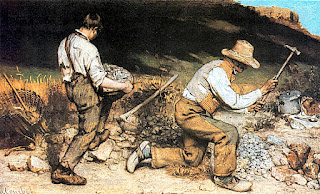Renaissance Blog
Tamera Captain
Art F200X- Professor
6 June 2022
Renaissance Blog
“Pallas and the Centaur”
Pallas and the Centaur is a painting by the Italian Renaissance painter Sandro Botticelli, c. 1482. It is now in the Uffizi Gallery in Florence. The female figure was called Camilla. This is one of his masterpieces recognized for its layers of symbolism is Pallas and the Centaur. The painting has been retouched and looked and printed in many places, and these retouching’s have faded. These figures are from classical mythology and probably form an allegory. There is a centaur on the left, and a female figure holding a very elaborate halberd on the right. She is clutching the centaur's hair, and he seems submissive to her, seems to make her feel powerful. The bright colors are used in this painting, this allows them to be the focus of the painting and make it pop. The darker colors of the sea, the sky and the sandy beaches add contrast to the work, highlighting the beauty of nature and love. Camilla was a figure from specifically Roman a princess raised in the forest by her father, the exiled King Metabus. The centaurs are learning to understand the feelings with uncontrolled passion, lust, and sensuality. Pallas by contrast, is a major deity, goddess of wisdom, trade and much else. I read that Centaurs are associated with uncontrolled passion, lust, and sensuality, the submission of passion to chastity and/or sexual reasoning. Her dress is decorated with the three-ring insignia of the Medici family, it was made for the Medici family. She wears either olive branches of the tree of Pallas or laurel sprays, entwined around her head, arms, breasts and hips. She wears leather sandals on her feet and a shield on her back. This painting is interesting and can be looked at in many different ways just like any other magnificent piece of art.




There is a kind of reversal of rolls in this painting in the sense that the uninhibited passions and lust of the centaur, depicted in earth-tones, is at the mercy of Camilla who is depicted in vibrant greens and golds and reds. The male submissive to the female which wouldn't have been an insignificant symbolism in the fourteen hundreds. There is a great deal of effort put into the centaurs male anatomy. As far as I can tell it appears to be rendered accurately which the women remains covered to her neck.
ReplyDelete